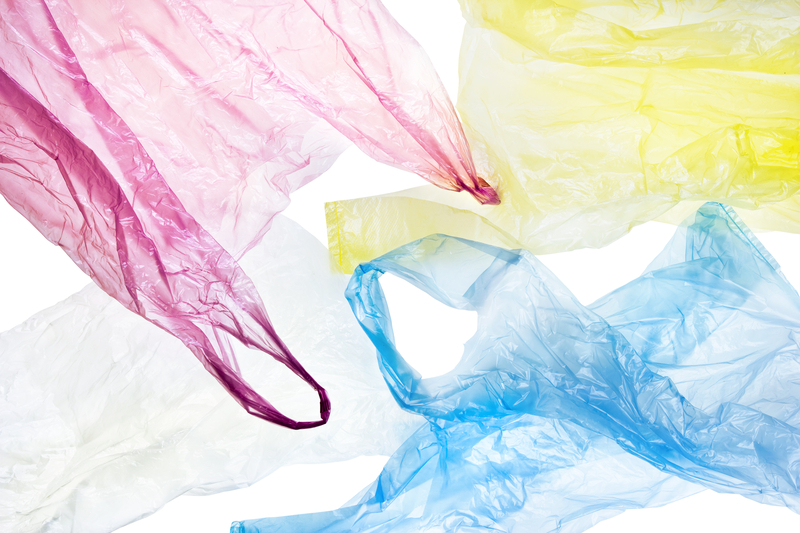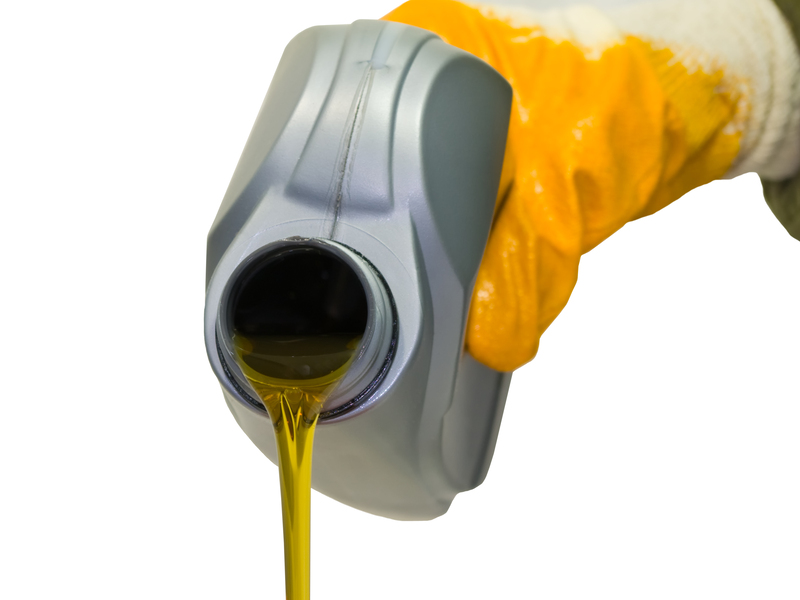Eco-Friendly Solutions for Disposing and Recycling Pots and Pans
Have you ever wondered what to do with old pots and pans that have worn out or lost their nonstick coating? Disposing of cookware responsibly can be a challenge, but eco-friendly solutions for recycling pots and pans are plentiful and accessible. By making sustainable choices, you can reduce landfill waste, conserve resources, and contribute to a healthier planet.

Why Choose Eco-Friendly Disposal for Pots and Pans?
Before diving into the options for sustainable pan and pot disposal, it's important to understand the environmental impact of cookware waste. Each year, millions of cookware pieces end up in landfills, taking years--if not centuries--to decompose. Many pots and pans, especially those made from metals like aluminum, stainless steel, or cast iron, could be recycled or reused rather than discarded.
Eco-conscious choices ensure valuable resources are not lost and that hazardous materials, sometimes found in coatings, are properly managed. Moreover, recycling cookware can help reduce energy consumption and combat pollution associated with raw material extraction and manufacturing.
What are Your Pots and Pans Made Of?
Understanding the composition of your old cookware is the first step in choosing the right eco-friendly recycling method for pots and pans.
- Stainless Steel: Durable, versatile, and widely recyclable.
- Cast Iron: Long-lasting and suitable for refurbishing, upcycling, or recycling.
- Aluminum: Typically light and highly recyclable.
- Copper: Valuable but may require special recycling facilities.
- Nonstick (Teflon-coated): More challenging to recycle due to chemical coatings.
- Ceramic and Enamel: Usually not recyclable, but possible for repurposing.
Top Eco-Friendly Methods for Disposing of Pots and Pans
Now that you know what your cookware is made of, let's explore the best eco-friendly methods for disposing of pots and pans.
1. Donate Usable Cookware
One of the simplest and most sustainable options is to donate your old pots and pans if they are still in usable condition. Consider:
- Charity thrift stores and second-hand shops
- Local shelters and food banks
- Community centers and soup kitchens
- Freecycle or Buy Nothing groups on social media
Donation extends the life of your cookware, supports local communities, and keeps items out of landfills. Always ensure the items are clean and free of major damage before donating.
2. Reuse or Upcycle Your Pots and Pans
If donation isn't an option, get creative! Upcycling is a fun way to give your cookware a second life. Here are some inspiring ideas:
- Turn frying pans into quirky wall clocks or garden planters.
- Use saucepans as unique storage containers for tools or craft supplies.
- Transform lids into decorative trays or photo frames.
- Create a bird bath or wildlife feeder using an old pot or pan.
Upcycling pots and pans not only prevents waste but also provides a personalized touch to your home or garden!
3. Scrap Metal Recycling
For cookware that is no longer usable, recycling pots and pans for scrap metal is often the best eco-friendly solution.
- Contact your local recycling center to confirm they accept household metal products. Most centers welcome stainless steel, cast iron, aluminum, and copper cookware, but may have special requirements for nonstick items due to their coatings.
- Remove non-metal parts, such as plastic handles or lids, before recycling. Many recycling centers require these items to be separated.
- If the facility won't take nonstick pans, ask if they recommend any specialized drop-off points.
Recycling metal cookware conserves raw materials, reduces emissions, and uses significantly less energy than mining and refining new ore.
4. Specialized Nonstick Cookware Recycling
Nonstick cookware presents unique challenges due to PTFE (Teflon) coatings, which can release toxic fumes if overheated or improperly incinerated. However, there are responsible ways to dispose of and recycle nonstick pots and pans:
- Check with the pan's manufacturer. Some brands offer take-back or recycling programs for their products.
- Locate specialty recycling facilities. Some dedicated companies accept nonstick cookware and safely process it.
- Use Earth911 and similar databases to search for facilities that can handle Teflon-coated pans.
Never place nonstick pots and pans in regular curbside recycling unless you have confirmed they are accepted.
5. Municipal Waste and Household Hazardous Waste Events
In some areas, certain types of cookware can be dropped off during special municipal collection events. These events may accept items with chemical or hazardous components, such as nonstick pans or those with plastic handles.
- Contact your local waste authority for schedules and accepted items.
- Follow their guidelines for preparing your pots and pans for drop-off.
This is particularly important for cookware with Teflon or other coatings that may impact the environment if handled incorrectly.
Tips for Disposing and Recycling Pots and Pans Responsibly
- Always clean your cookware before disposal
- Remove all non-metal components--handles, knobs, or any decorative elements
- Sort and label cookware by material to aid recycling centers
- Consider upcycling or donation prior to recycling
- Do not place pots and pans in the blue bin without checking with your municipality
Where to Recycle Old Pots and Pans?
Searching for a drop-off location nearby? Here are some suggestions:
- Scrap yards: Accept most metals; call ahead to check specific policies.
- Municipal recycling centers: City or county facilities may have dedicated metal bins.
- Special programs: Certain retailers and manufacturers (e.g., William Sonoma, Calphalon) may offer take-back or recycling incentives.
- Earth911 or RecycleNation: Both offer searchable directories for local recycling solutions across North America.
Remember, always confirm with the facility regarding the specific type of cookware you want to dispose of, especially if it includes mixed materials or nonstick coatings.
Creative Repurposing: Giving Pots and Pans a Second Life
Disposal isn't always the only answer! *Revitalizing your old cookware* can add a touch of creativity to any space. Here are more detailed ideas for repurposing worn-out kitchenware:
- Hanging Planters: Drill holes in the base of a pot or pan, decorate it, and hang it in your garden for herbs or flowers.
- Chalkboard Art: Paint the underside of a frying pan with chalkboard paint for notes or kitchen menus.
- Bird Houses or Baths: Upside-down pots or deep frying pans make unique wildlife sanctuaries.
- Organizers: Use pans to store small items like keys, mail, or craft supplies by attaching them to walls or under cabinets.
Such projects reduce waste and provide a unique, personal touch to home organization or decor.
Cookware Take-Back Programs and Manufacturer Recycling Initiatives
Several leading brands are committed to eco-friendly cookware disposal through take-back schemes and greener manufacturing practices. Participating in these manufacturer-led recycling programs is an effective and convenient way to ensure your old pots and pans are managed responsibly.
- Calphalon: Offers a ReNew Take Back Program that lets you send back old cookware for recycling (U.S. only).
- TerraCycle: Partners with certain brands to recycle cookware and utensils; check their platform for current listings.
- Local retailers: Some kitchen stores host in-person recycling days or provide mail-in options--call ahead to learn more.
Check your cookware brand's website for details about sustainability or recycling initiatives.
Frequently Asked Questions About Eco-Friendly Pots and Pans Disposal
-
Can all pots and pans be recycled?
Most metal pots and pans can, but you should separate out non-metal components. Nonstick and ceramic cookware are more difficult and may require special facilities. -
Is it ok to throw pots and pans in the garbage?
It is always better to recycle, donate, or upcycle rather than throw away cookware. Landfills are not environmentally friendly disposal options for metal or coated pans. -
How do I know if my curbside pickup accepts pots and pans?
Contact your local waste management service or check their website for a list of accepted items. -
What do I do with pans that have damaged or flaking nonstick coating?
Avoid donating or using these for food. Look for a specialty recycling center or a manufacturer take-back program.

Reducing Cookware Waste: Buy Sustainable Pots and Pans
The most eco-friendly solution begins before disposal. Choose long-lasting, recyclable cookware from reputable brands committed to sustainability. Look for:
- Uncoated stainless steel or cast iron products
- Items made from recycled materials
- Brands with take-back or recycling programs
- Cookware with replaceable parts that extend product lifespan
- Reputable certifications for environmental standards (e.g., Cradle to Cradle, Green Seal)
Prioritizing quality over quantity and purchasing fewer, more functional pieces helps reduce waste in the long term.
Conclusion: Making Cookware Disposal Greener
When it comes to eco-friendly solutions for disposing and recycling pots and pans, there's no one-size-fits-all answer--but plenty of responsible, creative, and convenient options exist.
- Donate usable cookware
- Upcycle and repurpose items for new uses
- Recycle metal pots and pans at local facilities
- Use manufacturer take-back and specialty programs for nonstick or complex items
- Make sustainable purchasing decisions for future cookware needs
With a little effort and creativity, you can minimize waste, conserve resources, and even add charm to your home or garden--all while helping the planet. Let your kitchen cleanup be a step toward a more sustainable future!
